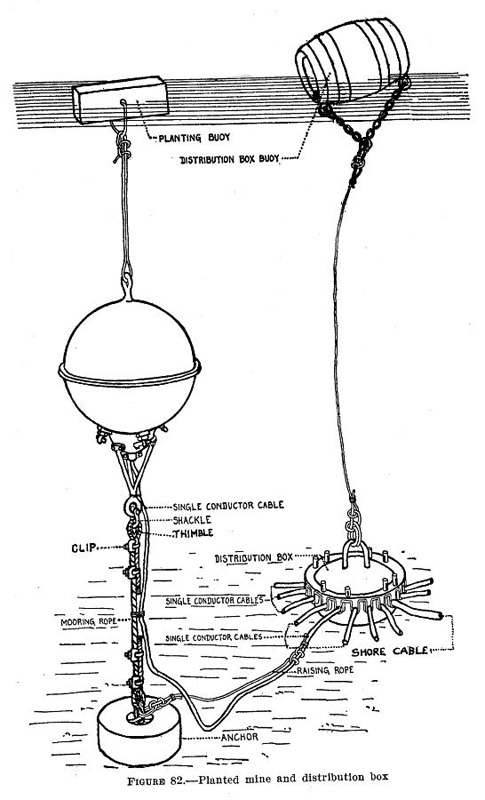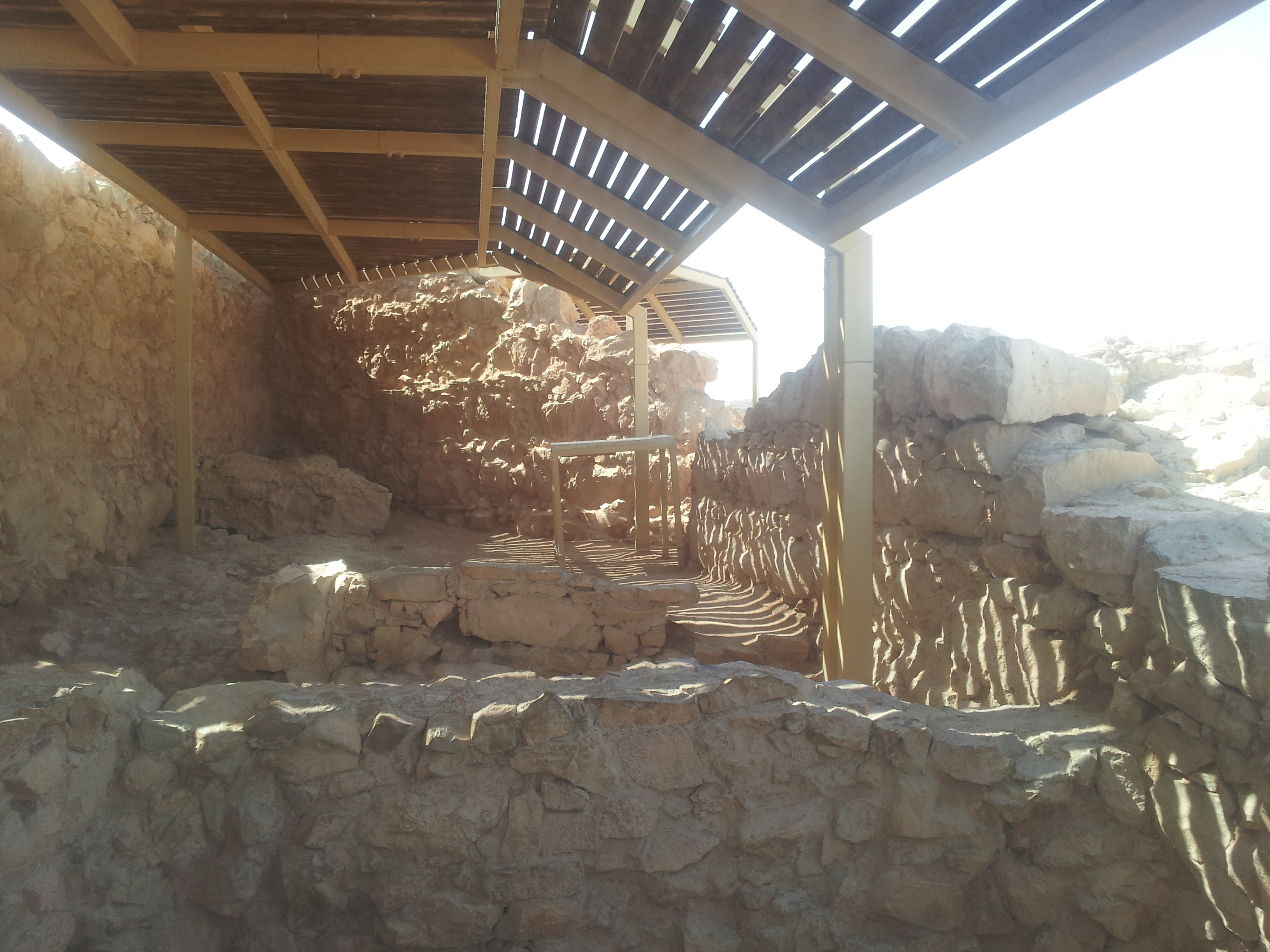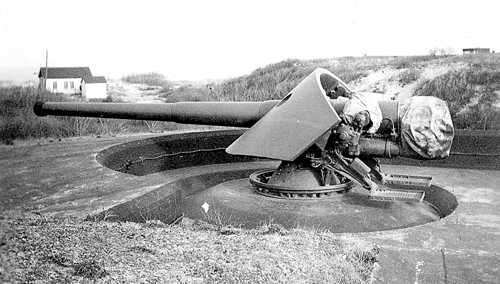|
Fort Mott State Park
Fort Mott, located in Pennsville, Salem County, New Jersey, United States, was part of the Harbor Defenses of the Delaware, a three-fort defense system designed for the Delaware River during the Reconstruction era and Endicott program modernization periods following the American Civil War and in the 1890s. The other two forts in the system were Fort Delaware on Pea Patch Island and Fort DuPont in Delaware City, Delaware. It was active for the Spanish American War and World War I. It was closed in 1944, and sold to the state of New Jersey to become Fort Mott State Park. History The original plans for Fort Mott (initially called the "Battery at Finn's Point") specified eleven gun emplacements for Rodman smoothbore guns and a mortar battery with six emplacements. Construction was started in 1872; however, only two of the gun emplacements and two magazines in the mortar battery were completed by 1876 when all work stopped due to a general suspension of fort work. The Board of Fort ... [...More Info...] [...Related Items...] OR: [Wikipedia] [Google] [Baidu] |
Harbor Defenses Of The Delaware
The Harbor Defenses of the Delaware was a United States Army Coast Artillery Corps Harbor Defense Command, harbor defense command. It coordinated the coastal defence and fortification, coast defenses of the Delaware River estuary from 1897 to 1950, beginning with the Board of Fortifications, Endicott program. These included both coastal artillery, coast artillery forts and Submarine mines in United States harbor defense, underwater minefields. The areas protected included the cities of Philadelphia, Camden, New Jersey, Camden, and Wilmington, Delaware, Wilmington along with the Chesapeake & Delaware Canal. The command originated circa 1896 as an Artillery District and became the Coast Defenses of the Delaware in 1913, with defenses initially at and near Fort Delaware on Pea Patch Island near Delaware City, Delaware, Delaware City. In 1925 the command was renamed as a Harbor Defense Command. During World War II the defenses were relocated to Fort Miles on Cape Henlopen at the mouth ... [...More Info...] [...Related Items...] OR: [Wikipedia] [Google] [Baidu] |
Parados
A parados is a bank of earth built behind a trench or military emplacement to protect soldier A soldier is a person who is a member of an army. A soldier can be a Conscription, conscripted or volunteer Enlisted rank, enlisted person, a non-commissioned officer, a warrant officer, or an Officer (armed forces), officer. Etymology The wo ...s from attack from the rear or from enfiladement. References External links Trench warfare Fortification (architectural elements) {{fort-stub ... [...More Info...] [...Related Items...] OR: [Wikipedia] [Google] [Baidu] |
Gershom Mott
Gershom Mott (April 7, 1822 – November 29, 1884) was a United States Army officer and a General in the Union Army, a commander in the Eastern Theater of the American Civil War. Early life General Mott was born in Lamberton, New Jersey, a town outside of Trenton. He was the grandson of American Revolutionary War Captain John Mott, who guided General George Washington’s army down the Delaware River to the celebrated victory at the Battle of Trenton. The reliability of this claim has recently come under question. His parents were Gershom and Phebe (or Phoebe) Rose Scudder Mott.Heidler, p. 1369. Gershom Mott was the youngest of five children. He received his education at the Trenton Academy, which is now the Trenton Public Library (Main Branch). Gershom Mott began to work when he was only fourteen years old as a sales clerk in a dry goods store in New York City. He became a second lieutenant in the 10th U.S. Infantry during the Mexican–American War. On August 8, 1849 ... [...More Info...] [...Related Items...] OR: [Wikipedia] [Google] [Baidu] |
Minesweeper
A minesweeper is a small warship designed to remove or detonate naval mines. Using various mechanisms intended to counter the threat posed by naval mines, minesweepers keep waterways clear for safe shipping. History The earliest known usage of the naval mine dates to the Ming dynasty.Needham, Volume 5, Part 7, 203–205. Dedicated minesweepers, however, only appeared many centuries later during the Crimean War, when they were deployed by the British. The Crimean War minesweepers were rowboats trailing Grappling hook, grapnels to snag mines. Minesweeping technology picked up in the Russo-Japanese War, using aging torpedo boats as minesweepers. In Britain, naval leaders recognized before the outbreak of World War I that the development of sea mines was a threat to the nation's shipping and began efforts to counter the threat. Sir Arthur Wilson, 3rd Baronet, Sir Arthur Wilson noted the real threat of the time was a blockade aided by mines and not an invasion. The function of the ... [...More Info...] [...Related Items...] OR: [Wikipedia] [Google] [Baidu] |
Submarine Mines In United States Harbor Defense
The modern era of defending American harbors with controlled mines or Naval mine, submarine mines (originally referred to as "torpedoes") began in the post-Civil War period, and was a major part of US Seacoast defense in the United States, harbor defenses from circa 1900 to 1947. Brief history In 1866, the United States Army Corps of Engineers established the U.S. Army Engineer School, Engineer School of Application at Fort Totten (Queens), Willets Point, New York. The first commander of this school, Major Henry Larcom Abbot, was almost single-handedly responsible for designing and supervising the program of research and development that defined the strategy and tactics for the mine defense of American harbors. Abbot experimented with underwater explosives, fuzes, cabling, and electrical equipment for over a decade before publishing the first manuals on the use of mines in coast defense in 1876–77. At least one experimental controlled minefield was emplaced at this time, at Fort ... [...More Info...] [...Related Items...] OR: [Wikipedia] [Google] [Baidu] |
Casemate
A casemate is a fortified gun emplacement or armoured structure from which guns are fired, in a fortification, warship, or armoured fighting vehicle.Webster's New Collegiate Dictionary When referring to antiquity, the term "casemate wall" means a double city wall with the space between the walls separated into chambers, which could be filled up to better withstand battering rams in case of siege (see .) In its original early modern meaning, the term referred to a vaulted chamber in a fort, which may have been used for storage, accommodation, or artillery which could fire through an opening or embrasure. Although the outward faces of brick or masonry casemates proved vulnerable to advances in artillery performance, the invention of reinforced concrete allowed newer designs to be produced well into the 20th century. With the introduction of ironclad warships, the definition was widened to include a protected space for guns in a ship, either within the hull or in the low ... [...More Info...] [...Related Items...] OR: [Wikipedia] [Google] [Baidu] |
3-inch Gun M1898
The 3-inch gun M1903 and its predecessors the M1898 and M1902 were rapid fire breech-loading artillery guns with a 360-degree traverse. In some references they are called "15-pounders" due to their projectile weight. They were originally emplaced from 1899 to 1917 and served until shortly after World War II. These 3-inch guns were placed to provide fire to protect underwater mines and nets against minesweepers, and also to protect against motor torpedo boats. In some documentation they are called "mine defense guns". The 3-inch guns were mounted on pedestal mounts (or a retractable " masking parapet" mount for the M1898) that bolted into a concrete emplacement that provided cover and safety for the gun's crew. History The 3-inch mine defense guns were part of a comprehensive plan of new fortifications specified by the Board of Fortifications of 1885. The new forts initially included guns up to 12-inch (305 mm) on disappearing carriages, to conceal the fort from obser ... [...More Info...] [...Related Items...] OR: [Wikipedia] [Google] [Baidu] |
Balanced Pillar
A disappearing gun, a gun mounted on a ''disappearing carriage'', is an obsolete type of artillery which enabled a gun to hide from direct fire and observation. The overwhelming majority of carriage designs enabled the gun to rotate backwards and down behind a parapet, or into a pit protected by a wall, after it was fired; a small number were simply barbette mounts on a retractable platform. Either way, retraction lowered the gun from view and direct fire by the enemy while it was being reloaded. It also made reloading easier, since it lowered the breech to a level just above the loading platform, and shells could be rolled right up to the open breech for loading and ramming. Other benefits over non-disappearing types were a higher rate of repetitive fire and less fatigue for the gun crew. Some disappearing carriages were complicated mechanisms, protection from aircraft observation and attack was difficult, and almost all restricted the elevation of the gun. With a fe ... [...More Info...] [...Related Items...] OR: [Wikipedia] [Google] [Baidu] |
5-inch Gun M1897
The 5-inch gun M1897 (127 mm) and its variant the M1900 were coastal artillery pieces installed to defend major American seaports between 1897 and 1920. For most of their history they were operated by the United States Army Coast Artillery Corps. They were installed on balanced pillar (a form of disappearing carriage) or pedestal (aka barbette) mountings; generally the M1897 was on the balanced pillar mounting and the M1900 was on the pedestal mounting. All of these weapons were scrapped within a few years after World War I. History In 1885, William C. Endicott, President Grover Cleveland's Secretary of War, was tasked with creating the Board of Fortifications to review seacoast defenses. The findings of the board illustrated a grim picture of existing defenses in its 1886 report and recommended a massive $127 million construction program of breech-loading cannons, mortars, floating batteries, and submarine mines for some 29 locations on the US coastline. Most of the Boa ... [...More Info...] [...Related Items...] OR: [Wikipedia] [Google] [Baidu] |
Disappearing Gun
A disappearing gun, a gun mounted on a ''disappearing carriage'', is an obsolete type of artillery which enabled a gun to hide from direct fire and observation. The overwhelming majority of carriage designs enabled the gun to rotate backwards and down behind a parapet, or into a pit protected by a wall, after it was fired; a small number were simply barbette mounts on a retractable platform. Either way, retraction lowered the gun from view and direct fire by the enemy while it was being reloaded. It also made reloading easier, since it lowered the breech to a level just above the loading platform, and shells could be rolled right up to the open breech for loading and ramming. Other benefits over non-disappearing types were a higher rate of repetitive fire and less fatigue for the gun crew. Some disappearing carriages were complicated mechanisms, protection from aircraft observation and attack was difficult, and almost all restricted the elevation of the gun. With a fe ... [...More Info...] [...Related Items...] OR: [Wikipedia] [Google] [Baidu] |








